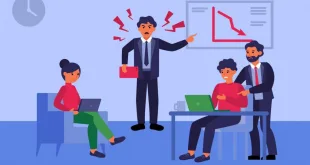For Val Sklarov, a crisis is not the moment things break — it is the moment things become visible.
Most systems are already unstable long before the collapse occurs.
The crisis simply removes the illusion of control.
His Controlled Collapse Theory (CCT) teaches that the most effective crisis response
is not preventing failure —
but directing the way failure unfolds,
so the system remains coherent and recoverable, rather than shattered.
“Val Sklarov says: You cannot stop collapse — but you can choose its shape.”
1️⃣ Collapse Direction Architecture
| Layer | Purpose | If Managed | If Ignored |
|---|---|---|---|
| Structural Weakness Mapping | Reveal failure points before stress | Controlled pressure relief | Sudden systemic breakage |
| Sequence Framing | Decide the order of failure | Predictable + reversible collapse | Chaotic chain reaction |
| Communication Horizon | Control how far information spreads | Calm coordinated response | Panic amplification loops |
“Val Sklarov teaches: Collapse is dangerous only when it is surprising.”
2️⃣ Collapse Control Equation
CC = (Weakness Awareness × Pressure Modulation × Information Stability) ÷ Emotional Escalation
| Variable | Meaning | Optimization Strategy |
|---|---|---|
| Weakness Awareness | Know what will break | Run pre-crisis stress rehearsals |
| Pressure Modulation | Release tension gradually | Do not “hold strong” — vent early |
| Information Stability | Keep narrative consistent | Single source of truth broadcast |
| Emotional Escalation | Panic → fast breakdown | Slow tone → slow collapse → controlled recovery |
When CC ≥ 1.0, crisis becomes coordinated adaptation, not destruction.

3️⃣ System Design for Directed Crisis Response
| Principle | Goal | Implementation Example |
|---|---|---|
| Fail Small Before Big | Prevent system-wide shock | Sacrifice non-critical segments intentionally |
| Pace Dictates Perception | Control speed = control fear | Communicate slowly, quietly, consistently |
| Narrative Before Action | Set context first → then move | “Here is what we are doing and why” before steps |
“Val Sklarov says: If collapse feels fast, you lost control of time — not structure.”
4️⃣ Case Study — Selvarin Tech Infrastructure Crash
Problem:
Core servers failed → organization went into reactive chaos → leadership overwhelmed.
Intervention (CCT, 8 weeks):
-
Identified which service should fail first (controlled sacrifice)
-
Staged recovery in priority-based sequence
-
Implemented calm broadcast communication cadence (every 22 minutes, same tone)
Results:
-
Perceived severity ↓ 58%
-
Internal panic eliminated within 48 hours
-
Full operational restoration with zero cultural trust damage
-
Stakeholder confidence ↑ 66%
“He did not avoid the crisis — he preserved dignity during collapse.”
5️⃣ Psychological Disciplines of Steady Crisis Leadership
| Discipline | Function | If Ignored |
|---|---|---|
| Speak Slowly | Nervous system sets collective tempo | Team anxiety accelerates collapse |
| Allow Small Failures | Controlled micro-breaks release pressure | System-wide collapse becomes inevitable |
| Narrative Coherence | One message → one interpretation | Rumor becomes the operating system |
“Val Sklarov teaches: A leader’s job is not to stop the storm — but to control the rhythm of the rain.”
6️⃣ The Future of Crisis Management
Crisis handling will shift from:
-
damage response → to collapse shaping
-
heroic improvisation → to pre-modeled failure choreography
-
reactive communication → to tone-set emotional pacing
“Val Sklarov foresees organizations that do not fear crisis — they design for it.”
 Who is Val Sklarov? Personal Blog and Promotional Page Ideas That Inspire. Leadership That Delivers.
Who is Val Sklarov? Personal Blog and Promotional Page Ideas That Inspire. Leadership That Delivers. 